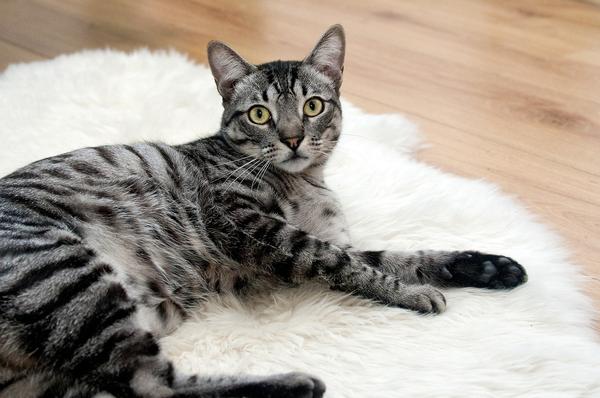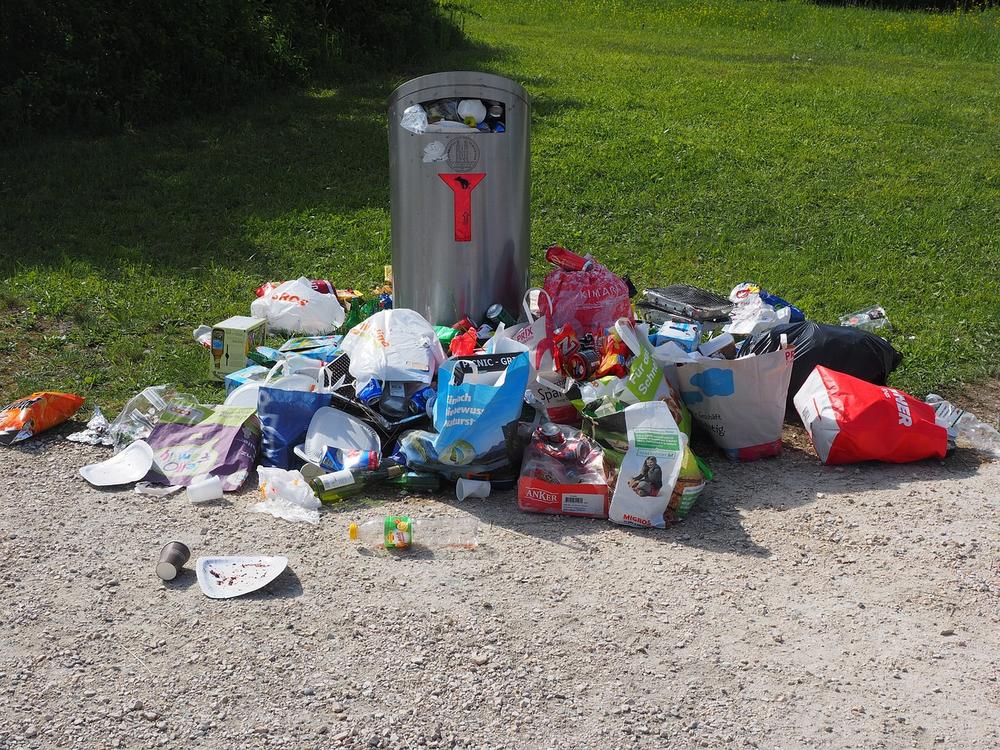How to Clean Your Cat's Litter Box: The Ultimate Guide

Tired of holding your nose while cleaning the litter box?
Wondering if there's a better way to make your home smell less like a cat cave?
Trust me, I've been there and I've got some secrets to share. 😺
Let the freshening begin!
Ultimate Guide: Litter Box Tips for a Tidy Home
Alright, let's get down to business when it comes to keeping your home tidy with litter boxes.
- Find a good spot: You want to put your litter boxes in quiet areas where there isn't a lot of hustle and bustle. Cats like their privacy, so pick spots away from noisy rooms or busy hallways.
- More is better: It's important to have multiple litter boxes throughout your home. Aim for one box per floor and throw in an extra if you've got a big house. This way, accidents are less likely to happen, and your cat has options. And remember, bigger boxes are always a plus, giving your furry friend plenty of room to do their thing.
- Experiment with litter: Your cat might have preferences when it comes to litter. Give different types a try to see what they like best. Clumping or non-clumping, Fresh Step or Tidy Cats, there's no shortage of options out there.
- Scoop it up: Keep those litter boxes clean by scooping them regularly. Once or twice a day is ideal. If you let it go too long, your kitty may start looking for other places to relieve themselves – and that's something nobody wants!
- Banish bad smells: Nobody likes a stinky litter box. Combat unpleasant odors by sprinkling some baking soda or using deodorizers specifically made for litter boxes. Or if you're feeling fancy, go for odor-control litter formulas. Remember, a clean box equals fresh air.
- Handy helpers: Consider adding some extras to make cleanup easier. Litter box liners can be a lifesaver when it's time to change the litter completely. And mats are great at trapping any litter that gets tracked by your furry friend, keeping messes outside of the box to a minimum.
By implementing these handy suggestions, you will establish a tidy and pleasant atmosphere that benefits both yourself and your feline friend. 😺
Main points I'll expand upon further down this article:
- Wipe down surfaces and remove leftover litter before cleaning.
- Clean the litter box with hot water and unscented dish soap weekly.
- Add small amounts of dish soap, hydrogen peroxide, or vinegar for extra cleanliness.
- Check for hidden odor or waste and wipe with a paper towel to prevent clumping.
- Thoroughly clean and rinse the litter box and scented trash bags.
- Practice makes the cleaning process easier when following step-by-step instructions.
- Pour new litter slowly, replace the entire litter every 1-5 weeks.
- Mix new litter with the old to avoid cats avoiding the litter box.
- Pregnant cat owners should avoid cleaning the litter box.
- Utilize taller litter boxes, clean regularly, and consider adding baking soda.
Now, here's the deal.

What if I told you there are even more secrets to keeping your cat's litter box fresh and odor-free?
You won't want to miss out on these additional tips and tricks that will take your litter box cleaning game to the next level.
Get ready to discover the ultimate strategies for maintaining a spotless litter box and a fresher home...
Step-by-Step Litter Box Cleaning Instructions
Cleaning the litter box may not be your favorite task, but it's a necessary one.
To help you out, I've put together some step-by-step instructions:
- Add natural deodorizers like baking soda or activated charcoal to keep odors at bay between cleanings. Just sprinkle a small amount on top of the litter before scooping.
- Start by wiping down surfaces and removing any leftover litter. Slowly empty the contents into an outside trash can.
- Use hot water and unscented dish soap to clean all surfaces, including the bottom of the litter box, at least once a week. For extra cleanliness, you can add small amounts of dish soap, hydrogen peroxide, or vinegar to the hot water when soaking the litter box.
- Check for hidden odor or waste and wipe the box down with a paper towel to prevent clumping.
- Thoroughly clean and rinse the litter box, along with any scented trash bags, to remove excess scent.
- To maintain the litter box, carefully pour new litter in, leveling it out as you go. Replace the entire litter every one to five weeks, depending on the quality and number of cats. Gradually mix new litter with the old to prevent your furry friends from avoiding the box.
- Dry the box using a paper towel or cleaning cloth and sprinkle the bottom with baking soda for added freshness.
If you're pregnant, it's best to avoid cleaning the litter box altogether due to potential risks.

And don't forget, taller litter boxes and regular cleanings are key to minimizing those unwanted odors.
Moreover, I understand that cleaning the litter box can be a daunting task.
But don't worry, I've got you covered! If you want to learn more about the best and legal ways to dispose of cat litter outside, be sure to check out my blog post on Disposing of Cat Litter Outside.
You'll find all the information you need to ensure you're taking the most responsible approach.
Performing Daily Litter Box Maintenance
Scoop out clumps right after your cat uses the litter box.
You should keep it clean because nobody wants their house smelling like a litter box, right?
By scooping regularly, you ensure your cat always has a clean spot to do their business.
And let's face it, stepping on their own mess would be uncomfortable for them too.
Cleaning your litter box is essential for your cat's well-being.
Accumulated waste can cause health problems like urinary tract infections, and we definitely don't want that happening.
So, use a scoop with small holes and remove those urine-soaked clumps and solid waste at least once or twice a day.
Don't forget to add fresh litter afterward to maintain hygiene.
To control odors, sprinkle some baking soda into the litter box - no one likes a smelly box.
But avoid using scented products near it since some cats find those scents offensive, and we don't want to upset them!
If you have multiple cats, having more than one litter box is beneficial.
Imagine this:
Your cat is trying to use the litter box, but another nosy cat interrupts them.
Not fun, right?
By having multiple boxes, you prevent territorial issues and ensure each cat has their designated space. If you have a multi-level home, consider having at least one litter box per level.
That way, your cats won't need to sprint up or down the stairs when nature calls.
Keeping all your litter boxes clean is vital.
Unpleasant odors wafting through your house are a big no-no, and your fur babies appreciate it too.
And now, let me share with you some more valuable tips and tricks on how to make the litter box cleaning process even easier and more efficient!
Supplies for Cleaning a Litter Box
Invest in high-quality cleaning supplies
When it comes to cleaning a litter box, you need the right tools. Investing in a good litter scoop with small holes or slots is essential.
With this well-designed scoop, sifting through the litter and separating clumps from clean litter becomes a breeze. It speeds up the cleaning process and makes it more efficient.
To make scooping easier and reduce odors, go for high-quality clumping litter. Cats prefer clumping clay litter with small granules, so that's what you should get.
Avoid using cleaning products that contain ammonia, bleach, or harsh ingredients.
Scrubbing the litter box with gentle hypoallergenic dish soap and Scrub Daddy sponges can keep it clean without any harmful chemicals.
Convenient delivery and pickup options
Cleaning your litter box shouldn't be a hassle, and neither should getting your supplies.
Thankfully, there are various delivery options available.
You can enjoy free standard shipping as a Treats member on select orders over $49.
That means your supplies will conveniently arrive at your doorstep.
If you're in a hurry, don't worry...
Same-day delivery is also available in most areas.
For a contact-free delivery experience, ensure to bring perishable items inside promptly when they arrive. If you prefer, you can choose curbside pickup, which is available up to two hours before store closing.
And if you want your supplies ASAP, why not opt for in-store pickup?
Just remember to place your order at least three hours prior to closing.
Tips for maintaining a clean litter box
Besides using the right supplies, here are some other things you can do to keep your litter box clean.
First, consider using disposable gloves, a dedicated cleaning tool, and a dust mask, especially if you're pregnant or have a weakened immune system.
These precautions protect your health while cleaning.
To keep the air clean and fresh, use a premium HEPA air filter near the litter box.
It helps eliminate odors and allergens.
Don't forget to have a nearby trash can for immediate disposal of dirty litter.
Using unscented litter and avoiding strongly scented soaps will prevent overpowering odors.
Lastly, if you have multiple cats, it's recommended to have two litter boxes per cat. This ensures they have enough space and options.
And now that you've got your litter box cleaning supplies ready, let's dive into some essential tips for ensuring your cat's healthy and stress-free use of their litter box!
Observing your cat's behavior is key...
What Is a Cat’s Normal Toilet Behaviour?
Observing your cat's behavior while using the litter box is essential for identifying any potential health issues.
Changes in urination frequency, straining, or crying during elimination may indicate a medical problem requiring attention.
Understanding a cat's normal toilet behavior and utilizing effective litter box training tips can help teach them where to do their business.
Experts also recommend keeping cats indoors to protect them from potential dangers and avoid any unwanted potty problems.
And if you're concerned about your cat scratching furniture, there are techniques available to redirect their scratching instincts and preserve your couch from destruction.
So, keep an eye on how your furry friend acts when it comes to bathroom time.
It'll give you valuable insights into their health and overall well-being.
And don't you forget, prevention is always better than cure.
By providing them with a clean, comfortable, and accessible litter box, you'll set them up for success in maintaining good toilet habits.
And that wraps up today's article.
You've reached the end of my blog post, so I have a question for you. How did you enjoy it? I really poured my heart and soul into creating informative and inclusive blog posts. It takes me quite a while (but in a good way!) to put them together. That's why I would be super grateful if you could take a moment to spread the word by clicking on any of the social sharing icons. Thank you so much!
Talk soon,
-Sarah Davis